Tewkensuchus: King Of Punta Peligro
Tewkensuchus: King of Punta Peligro
Last month we got our fourth croc of the year and our second notosuchian: Tewkensuchus salamanquensis (Forehead crocodile from the Salamanca Formation), a large-bodied sebecoid from the earliest Paleocene of Argentina. And GODDAMN is it a cool one.
Below some of the fossil material of Tewkensuchus, it doesn't look like much but stay with me for this post.

Starting with the fossil material, Tewkensuchus is admittedly not the most complete sebecid, hell Dentaneosuchus from two years ago is significantly better preserved. Essentially, Tewkensuchus preserves a bit of the skull and a few vertebrae. But the material we do have is exceptional in other ways. Like some European sebecoids, it had a high and broad sagittal crest that extends over its forehead flanked by two broad depressions. Remember the similarity to European sebecoids, thats gonna come back later. Theres also some interesting stuff in how the bony eyebrows, the palpebrals, articulate with the rest of the skull.
What is REALLY weird however is the shape of the postorbitals. Quick anatomy lesson, in crocs the postorbitals form the front corners of the skull table thats located just behind the eyes. They tend to be flat, but in the case of Tewkensuchus they are inclined so that they rise upwards behind the eyes. Now we have plenty of examples of crocodylomorphs with raised squamosals, giving them a somewhat ear-like appearance, but raised postorbitals are a new one.
Below: An artistic interpretation of Tewkensuchus featuring its unique cranial morphology by Manusuchus (give them a follow) from different angles.



One last thing on its anatomy, it was BIG. And I mean big. The team that described Tewkensuchus estimate that its complete skull might have been just over half a meter long, so some 20 inches. This might correspond to a weight of perhaps 300 kg (660 lb), larger than even the largest Cretaceous Baurusuchids.
Now, I hope you remember the part where I said that theres similarities to European sebecoids. Well that sentence has two key points the paper deals with. First of all, the connection to European forms itself. Phylogenetic analysis seems to indicate that despite being found in Patagonia, all its closest relatives are from the Eocene of Europe. These are the recently named giant Dentaneosuchus from France, Bergisuchus from Germany and Iberosuchus (I'll let you figure that one out for yourselves). So after Tewkensuchus disappears South America is inhabited by only distant cousins while its closest relatives show up some 20 million years later on the other side of the Atlantic.
The other noteworthy part of the statement is the use of "Sebecoid" rather than sebecid. That's because of taxonomic back and forth. Essentially, a few previous studies have not included European sebecoids (Bergisuchus and Iberosuchus) within the family Sebecidae, instead featuring them as a separate branch that split off beforehand. In some studies that branch is known as Bergisuchidae, in others they are two branches, you get the idea. Now the description of Dentaneosuchus for instance did away with Bergisuchidae and simply include these European forms within Sebecidae itself. Still as the basalmost members, but given the honor of being at least included. Same goes for Ogresuchus. Well, in the description of Tewkensuchus, we go back to the separate model. So Bergisuchus, Iberosuchus, Dentaneosuchus and Tewkensuchus all form a single not officially named group simply referred to as the "Eurogondwanan clade". This group was placed as the sister family to Sebecidae and together with Ogresuchus the two form the newly named Sebecoidea.
Europe's sebecoids, Dentaneosuchus (art by Joschua Knüppe), Bergisuchus (by Scott Reid) and Iberosuchus (once again Manusuchus)



And this is where we need to address the fact that Tewkensuchus creates a bunch of new problems and makes old ones worse. For starters, it's size. By all accounts its way too big. Keep in mind, this animal appeared some 2 to 3 million years after the extinction of the dinosaurs, an extinction event that is generally thought to have killed everything on land heavier than 10 kilos. And then you get Tewkensuchus with an estimated weight of 300. Well, there's two possible explanations for that. Explanation 1 hinges on the known fact that these rules don't quite apply to semi-aquatic animals. Sure, anything large on land got whiped out, but eusuchian crocodiles managed to survive quite well despite their large size in part because they were partially aquatic. So perhaps Tewkensuchus and sebecoids as a whole underwent an aquatic phase? Well, this would work quite well with what is known as the Sebecia-hypothesis. Essentially, there is some debate on the relationship between sebecids and other notosuchians. Some studies draw a link between them and the similarily terrestrial baurusuchids, placing them in the group Sebecosuchia. Other studies meanwhile believe that sebecids are most closely related to peirosaurids, which in turn are close kin to itasuchids and mahajangasuchids, with both of the latter being more semi-aquatic than other notosuchians. The problem with this is twofold. On the one hand, to my knowledge there has never been any indication that sebecids underwent an aquatic phase and even Cretaceous sebecoids like Ogresuchus from before the impact were clearly terrestrial. The other issue, as nice as this would fit with the Sebecia-hypothesis, this particular study actually recovers the Sebecosuchia model. So there's that.
Personally I don't really buy into this explanation, which takes us to the second possibility. Sebecoids got really jacked really fast. I mean, that's it really. If sebecoids didn't undergo some weird little phase that somehow excempts them from the 10 kilo rule then the only logical answer is that they must have grown to a ridiculous degree the second the dust settled. Do we have evidence for that? Well....kinda but not really no. The closest we have is the fact that Dentaneosuchus from the Eocene clearly reached an enormous size on its own, but that was over 20 million years after the impact. We do at least know that sebecoids were small prior to the KPG thanks to Ogresuchus from Spain, which grew to only a meter in length. But a sample size of one isn't exactly exact proof that all sebecoids were small prior to the impact, especially with shifting phylogenies. The paper itself argues that its most parsimonious that whatever sebecoid crossed the boundry was already fairly large, but time will tell if this holds up. Whatever the case, with a skull half a meter in length it was certainly a formidable predator and a terrifying sight to any unfortunate mammal to cross its path.
Tewkensuchus attacking a startled Monotrematum, a South American monotreme, art by Joschua Knüppe

Finally the last thing to address, paleogeography. It sucks. Moving on. Jokes aside, sebecoid geography was already a pain in the ass. Assuming the sebecosuchian model, sebecoids likely split off from baurusuchids during the Santonian. Mind you this is purely based in the first appearance of baurusuchids, since sebecoids didn't appear for quite a while. Ignoring the problematic Doratodon, the first sebecoid to appear in the fossil record is Ogresuchus in the Maastrichtian of Spain. In the Paleocene we then obviously get Tewkensuchus representing the Eurogondwana clade in Argentina as well as sebecids proper, which seem to be constrained to South America. But then in the Eocene we suddenly have sebecoids in Europe and Africa (for simplicity I'm assuming that Eremosuchus was a sebecoid rather than a sebecid as is traditional). So, how does any of this work? We don't know. I've been breaking my head over how to best explain this without just repeating the paper itself, so let me just say this. Maybe sebecoids originated in South America with baurusuchids, they managed to enter Europe at the very least once giving rise to Ogresuchus, probably via Africa given that its very much undersampled. From there who fucking knows. Maybe Ogresuchus was just one random branch and the two main groups both actually originate in South America. Maybe the Eurogondwana group emmigrating to Europe as well while sebecids proper remained. Maybe the Eurogondwana group originated in Europe and Tewkensuchus simply returned to South America, or maybe they originated in Africa and had members travel west to South America and north to Europe. Or maybe....you get the idea, we don't know. We don't know if they rafted or took land bridges (tho the latter seems more likely), we don't know where certain groups first originated in actuality, we do not know a lot and Tewkensuchus being such a blatant link between Paleocene South America and Europe, which were well separated by that point, raises so many questions.
I imagine this is what this entire last section reads like....

I wish that last segment wasn't as chaotic as it is, but like I said, its a big old confusing mess and it gives me a headachse just thinking about it. So for the time being, its simplest to assume that they split from baurusuchids in South America and then some stuff happened we don't understand. Personally, I'm very much putting my trust in Africa here, I am 100% convinced that some very important stuff went down that we just haven't found yet. But thats just me.
More Posts from Glitches25 and Others
Transformers One Airachnid Has A Breakdown ( LOL XD 😂😂🤣🤣) (Found this on YouTube)








all of my pacman comics


Cant have fucking shit in Detroit

🐻✨FNAF ADOPTABLE
i found another character in my files and I decided that I wanna hand them off to a new home!! Dm me if you're interested!

Deinosuchus: Giant Alligator or something older?
I know the title sucks, I couldn't think of anything poetic or clever ok? Anyways, still catching up on croc papers to summarize and this one did make a few waves when it was published about a week ago.
"Expanded phylogeny elucidates Deinosuchus relationships, crocodylian osmoregulation and body-size evolution" is a new paper by Walter, Massonne, Paiva, Martin, Delfino and Rabi, with quite a few of these authors having considerable experience with crocodile research. The thesis of the study is both simple and unusual. They suggest that several crocodilians traditionally held as stem-alligators, namely Deinosuchus, Leidyosuchus and Diplocynodon, weren't alligatoroids at all. In fact, if the study holds up they might not have been true crocodilians.
Ok, lets take a step back and briefly look at our main three subjects. Deinosuchus of course needs no introduction, a titan of the Cretaceous also known as the terror crocodile in some more casual sources, its easily one of the most iconic fossil crocodiles. It lived on either side of the Western Interior Seaway during the Campanian, fed on giant turtles and dinosaurs and with size estimates of up to 12 meters its easily among the largest crocodylomorphs who have ever lived.
Artwork by Brian Engh

Leidyosuchus also lived during the Campanian in North America and I would argue is iconic in its own right, albeit in a different way. It's historic to say the least and once housed a whole plethora of species, but has recently fallen on hard times in the sense that most of said species have since then been transferred to the genus Borealosuchus.
Artwork by Joschua Knüppe

Finally there's Diplocynodon, the quintessential croc of Cenozoic Europe. With around a dozen species found from the Paleocene to the Miocene all across Europe, it might be one of the most well studied fossil crocs there is, even if its less well known by the public due to its relatively unimpressive size range.
Artwork by Paleocreations

All three of these have traditionally been regarded as early members of the Alligatoroidea, one of the three main branches that form Crocodilia. In these older studies, Alligatoroidea can be broken up into three groups nested within one another. Obviously the crown is formed by the two living subfamilies, Alligatorinae and Caimaninae, both of which fall into the family Alligatoridae. If you take a step further out you get to the clade Globidonta, which in addition to proper Alligatorids also includes some basal forms with blunt cheek teeth as well as Orientalosuchina, tho jury's still out on whether or not they are truly alligator-relatives. And if you take a final step back and view Alligatoroidea as a whole, then you got our three main subjects neatly lined up outside of Globidonta in varying positions.
Below a highly simplified depiction of previous phylogenies. Deinosuchus, Leidyosuchus and Diplocynodon are often regarded as non-globidontan alligatoroids.

This new study however changes that long standing concensus. The team argues that several features we once thought defined alligatoroids are actually way more common across Crocodilia and even outside of it while also leverging some of the features of Deinosuchus and co. that have always been out of the ordinary. For instance, early alligatoroids are generally characterized as being comparably small, having had short, rounded heads, the afforementioned globular cheek teeth and of course the feature that still allows us to differentiate them from true crocodiles, the fact that they have a clear overbite. Now Leidyosuchus, Deinosuchus and Diplocynodon all have proportionally longer snouts than alligatoroids, their teeth interfinger like in crocodiles and most prominently (and namegiving for Diplocynodon) there is a large notch behind the snout tip that serves to receive two enlarged teeth of the lower jaw. These are of course just superficial examples, but if you wanna get into the nitty gritty check out the paper.
Below a simplified version of the papers phylogeny. Borealosuchus clades with Diplocynodon and Leidyosuchus and Deinosuchus are successive taxa. Planocraniidae are the sister to Crocodilia, which consists of Crocodyloids, Gavialoids (together Longirostres) and Alligatoroids.

Something also worth addressing in light of these results is salt tolerance in crocodilians and paleogeography. Basically, if you ignore Deinosuchus and co. (or well, just follow this new paper), then it is most likely that alligatoroids originated on the continent of Laramidia, i.e. the western half of America back when it was bisected by an enormous inland sea. Today, alligatoroids are famously intolerant of saltwater, yes, there are instances where alligators have been known to enter coastal waters, but its a far cry from what true crocodiles can achieve (just an example here's my recent post on Caribbean crocodiles). Given that alligatoroids don't appear on Appalachia, the other half of North America, until after the inland sea closes, this very much suggest that this intolerance goes way back. This has however always been at odds with Deinosuchus, which famously showed up along both the eastern and the western coast of the inland sea and at least lived close enough to the coast to leave its mark on the shells of sea turtles. We know it inhabited various near-shore environments and even stable isotope analysis of its teeth points towards it consuming either saltwater or prey that lives in the ocean. To a lesser degree its worth mentioning Diplocynodon, which though usually a freshwater animal has at least one species from coastal deposits. Now I do think its worth highlighting that just being salt tolerant doesn't necessarily mean they can't have been alligatoroids, given that salt glands could have easily been lost after Deinosuchus split off from other alligatoroids. Nevertheless, a position as a stem-crocodilian does add up with it being salt tolerant, with the assumption being that being tolerant to saltwater is basal to crocodilians as a whole and was simply lost in a select few lineages such as alligatoroids.
Given that its range spanned both coastlines of the Western Interior Seaway as well as direct evidence for interactions with marine life, Deinosuchus likely ventured out into the sea from time to time like some modern crocodiles.


There's also the matter of timing. When alligatoroids first appeared 82 million years ago, we already see the classic blunt-snouted morphotype with Brachychampsa and our dear giant Deinosuchus. Now if both were alligatoroids, this would suggest that they've been separate quite some time before that to bring forth these drastically different forms, yet attempts to estimate the divergence date suggest that they split no earlier than 90 million years ago. So if Deinosuchus is not an alligatoroid, then the timeline adds up a bit better. However I think the best example of this new topology really explaining an evolutionary mystery doesn't come from Deinosuchus, but from Diplocynodon. Those that know me might remember that I started working on researching Diplocynodon for Wikipedia, a process that's been slow and painfull both due to the 200 years of research history and the good dozen or so species placed in this genus. Tangent aside, one big mystery around Diplocynodon is its origin. They first appear in the Paleocene and survive till the Miocene, tend to stick to freshwater and oh yeah, species of this genus are endemic to Europe. Given that previous studies recovered them as alligatoroids, nobody was quite sure where Diplocynodon came from. Did they originate in North America and cross the Atlantic? Where they salt tolerant before and simply stuck to freshwater once in Europe? Or are they a much older alligatoroid lineage that entered Europe via Asia after having crossed Beringia. You know, the kind of headbreaking stuff we get when the fossil record is incomplete. But this new study recovers Diplocynodon as being closely related to the non-crocodilian Borealosuchus from the Cretaceous to Paleogene of North America. And that makes some sense, historically the two have been noted to be similar, hell there were even cases when Borealosuchus remains were thought to be North American examples of Diplocynodon. And Borealosuchus has the same double caniniforms as the other crocs we discussed so far. So when our three former alligatoroids got pushed outside of Crocodilia, Diplocynodon ended up forming a clade with Borealosuchus. And since Borealosuchus was wide spread in America by the late Cretaceous, and possibly salt tolerant, then it could have easily spread across Greenland and Scandinavia after the impact, giving rise to Diplocynodon.
The results of this study seem to suggest that Borealosuchus and Diplocynodon are more closely related that previously thought.


And since this is a Deinosuchus paper...of course theres discussion about its size. A point raised by the authors is that previous estimates typically employ the length of the skull or lower jaw to estimate body length, which might not be ideal and is something I definitely agree with. The problem is that skull length can vary DRASTICALLY. Some animals like early alligatoroids have very short skulls, but then you have animals in gharials in which the snout is highly elongated in connection to their ecology. Given that Deinosuchus has a relatively long snout compared to early alligatoroids, size estimates based on this might very well overestimate its length, while the team argues that head width would yield a more reasonable results. Previous size estimates have ranged from as low as 8 meters to as large as 12, which generally made it the largest croc to have ever existed. Now in addition to using head width, the team furthermote made use of whats known as the phylgenetic approach, which essentially bypasses the problem of a single modern analogue with peculariar proportions influencing the result. Now there is a bunch more that went into the conclusion, but ultimately the authors conclude that in their opinion, the most likely length for the studied Deinosuchus riograndensis specimen was a mere 7.66 meters in total length. And before you jump to any conclusions, DEINOSUCHUS WOULD HAVE GOTTEN BIGGER TRUST ME. I know having read "12 meter upper estimate" earlier is quite a contrast with the resulting 7.66 meters, but keep in mind this latter estimate is just one specimen. A specimen that in previous studies was estimated to have grown to a length of somewhere between 8.4 - 9.8 meters. Now yes, this is still a downsize overall, but also given that this specimen is far from the largest Deinosuchus we have, this means that other individuals would have certainly grown larger. Maybe not those mythical 12 meters, but still very large. So please keep that in mind.
Two different interpretations of the same specimen of Deinosuchus. Top a proportionally larger-headed reconstruction by randomdinos, bottom a smaller-headed reconstruction by Fadeno. I do not care to weigh in on the debate other than to say that size tends to fluctuate a lot between studies and that I'm sure this won't be the last up or downsize we see.


Regardless of the details, this would put Deinosuchus in the "giant" size category of 7+ meters, while early alligatoroids generally fall into the small (<1.5 meters) or medium (1.5-4 meters) size categories. The authors make an interesting observation relating to gigantism in crocs at this point in the paper. Prevously, temperature and lifestyle were considered important factors in crocs obtaining such large sizes, but the team adds to that the overall nature of the available ecosystem. In the case of Deinosuchus, it inhabited enormous coastal wetlands under favorable temperature conditions and with abundant large sized prey, a perfect combination for an animal to grow to an enormous size. And this appears to be a repeated pattern that is so common its pretty much regarded as a constant. To quote the authors, "a world with enormous crocodyliforms may have been rather the norm than the exception in the last ~ 130 million years." For other examples look no further than the Miocene of South America, the extensive wetlands of Cretaceous North Africa or even Pleistocene Kenya.
One striking example for repeated gigantism in crocodilians can be found in Miocene South America, when the caimans Purussaurus and Mourasuchus both independently reached large sizes alongside the gharial Gryposcuhus. The illustration below by Joschua Knüppe features some of the smaller earlier members of these species in the Pebas Megawetlands.

So that's it then, case closed. Deinosuchus and co aren't salt-tolerant alligators, they are stem-crocodilians. Deinosuchus was smaller than previously thought and Diplocynodon diverged from Borealosuchus. Leidyosuchus is also there. It all adds up, right? Well not quite. This all is a massive upheaval from what has previously been accepted and while there were outliers before, the alligatoroid affinities of these animals were the concensus for a long time. Future studies will need to repeat the process, analyse the data and the anatomical features and replicate the results before we can be sure that this isn't just a surprisingly logical outlier. Already I heard some doubts from croc researchers, so time will tell if Deinosuchus truly was some ancient crocodilian-cousin or if previous researchers were correct in considering it a stem-alligator. I for one will keep my eyes peeled.
back in the 00s a single dancing anime chibi gif would feed us for months on end
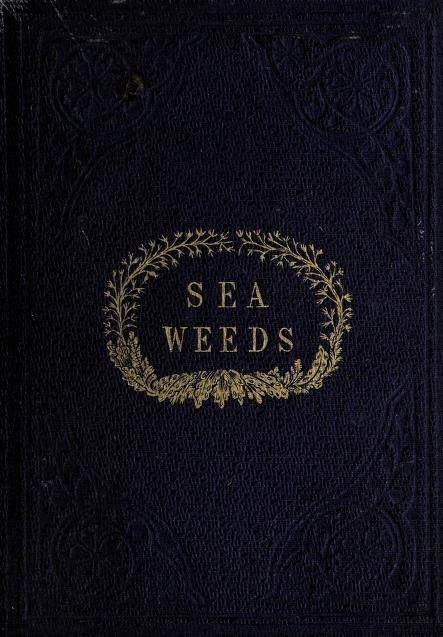

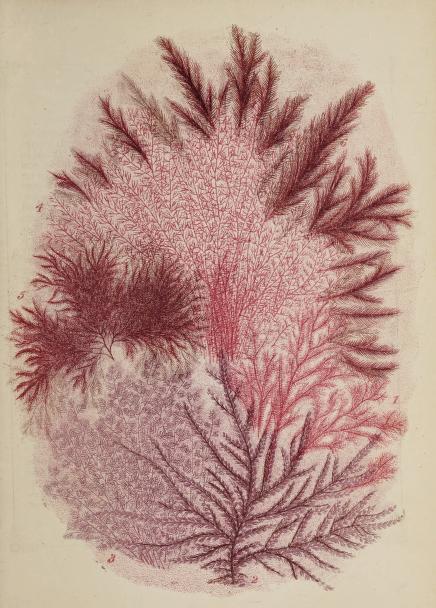
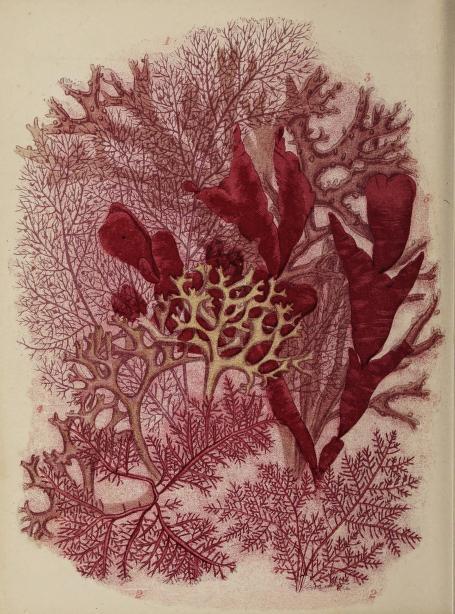
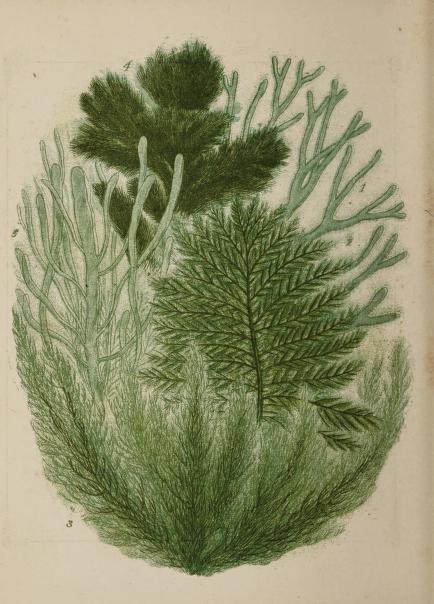




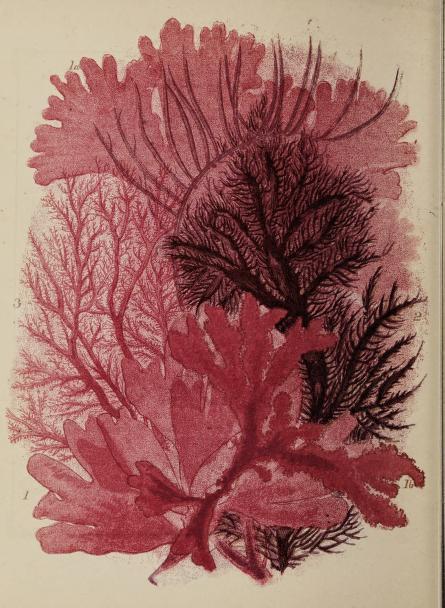
Sea weed illustrations taken from ‘Sea-weeds’ by C. A. Johns.
Published 1860 by SPCK.
Fisher - University of Toronto
archive.org












suddenly i have this au where everyone involved in the league got turned into a Beastie... (or maybe they always were and it's a different AU?) details tbd i just wanted to design the coaches as beasties lol






🛼Urban TOH print series by Kyri45🛼
This series was the craziest in terms of lineart, but it was fun!
-
 carthus-flame-arc reblogged this · 2 weeks ago
carthus-flame-arc reblogged this · 2 weeks ago -
 rxttenfish reblogged this · 2 weeks ago
rxttenfish reblogged this · 2 weeks ago -
 monsteritumputin reblogged this · 3 weeks ago
monsteritumputin reblogged this · 3 weeks ago -
 chaosvox liked this · 4 weeks ago
chaosvox liked this · 4 weeks ago -
 thedwarvenpirate reblogged this · 1 month ago
thedwarvenpirate reblogged this · 1 month ago -
 thedwarvenpirate liked this · 1 month ago
thedwarvenpirate liked this · 1 month ago -
 ruthlesslistener reblogged this · 1 month ago
ruthlesslistener reblogged this · 1 month ago -
 toadsong liked this · 1 month ago
toadsong liked this · 1 month ago -
 antiquissolis liked this · 1 month ago
antiquissolis liked this · 1 month ago -
 northerlyy liked this · 1 month ago
northerlyy liked this · 1 month ago -
 zabaniyas liked this · 1 month ago
zabaniyas liked this · 1 month ago -
 dranosh-haran-of-paleoworld liked this · 1 month ago
dranosh-haran-of-paleoworld liked this · 1 month ago -
 theradioghost liked this · 1 month ago
theradioghost liked this · 1 month ago -
 snnttgbsn liked this · 1 month ago
snnttgbsn liked this · 1 month ago -
 biggygrass-blog liked this · 1 month ago
biggygrass-blog liked this · 1 month ago -
 vector2092 liked this · 1 month ago
vector2092 liked this · 1 month ago -
 lunarrgrrls liked this · 1 month ago
lunarrgrrls liked this · 1 month ago -
 gentleman-bayleef reblogged this · 1 month ago
gentleman-bayleef reblogged this · 1 month ago -
 gentleman-bayleef reblogged this · 1 month ago
gentleman-bayleef reblogged this · 1 month ago -
 gentleman-bayleef liked this · 1 month ago
gentleman-bayleef liked this · 1 month ago -
 crystal-stardust liked this · 1 month ago
crystal-stardust liked this · 1 month ago -
 blufangfierrio liked this · 1 month ago
blufangfierrio liked this · 1 month ago -
 shadowdemon37 liked this · 1 month ago
shadowdemon37 liked this · 1 month ago -
 leftiedinolover reblogged this · 1 month ago
leftiedinolover reblogged this · 1 month ago -
 leftiedinolover liked this · 1 month ago
leftiedinolover liked this · 1 month ago -
 saucryognathus liked this · 1 month ago
saucryognathus liked this · 1 month ago -
 rasmot-corner liked this · 1 month ago
rasmot-corner liked this · 1 month ago -
 devolution-spiral liked this · 1 month ago
devolution-spiral liked this · 1 month ago -
 lizarddizaster reblogged this · 1 month ago
lizarddizaster reblogged this · 1 month ago -
 freshrranchfirefestival liked this · 1 month ago
freshrranchfirefestival liked this · 1 month ago -
 dragonsmirk liked this · 1 month ago
dragonsmirk liked this · 1 month ago -
 that-cameo liked this · 1 month ago
that-cameo liked this · 1 month ago -
 paleontologylife reblogged this · 1 month ago
paleontologylife reblogged this · 1 month ago -
 paleontologylife liked this · 1 month ago
paleontologylife liked this · 1 month ago -
 quesadillacop liked this · 1 month ago
quesadillacop liked this · 1 month ago -
 martian-marco reblogged this · 1 month ago
martian-marco reblogged this · 1 month ago -
 martian-marco liked this · 1 month ago
martian-marco liked this · 1 month ago -
 glycohalyx liked this · 1 month ago
glycohalyx liked this · 1 month ago -
 jaquitor liked this · 1 month ago
jaquitor liked this · 1 month ago -
 wowflutterwanderjitter liked this · 1 month ago
wowflutterwanderjitter liked this · 1 month ago -
 bowla-borscht liked this · 1 month ago
bowla-borscht liked this · 1 month ago -
 kraetac reblogged this · 1 month ago
kraetac reblogged this · 1 month ago -
 kraetac liked this · 1 month ago
kraetac liked this · 1 month ago -
 mrpinchy reblogged this · 1 month ago
mrpinchy reblogged this · 1 month ago -
 samneugebaur21-22 liked this · 1 month ago
samneugebaur21-22 liked this · 1 month ago -
 icemanking liked this · 1 month ago
icemanking liked this · 1 month ago -
 lenorarose liked this · 1 month ago
lenorarose liked this · 1 month ago -
 noddytheornithopod reblogged this · 1 month ago
noddytheornithopod reblogged this · 1 month ago -
 noddytheornithopod liked this · 1 month ago
noddytheornithopod liked this · 1 month ago -
 suryp reblogged this · 1 month ago
suryp reblogged this · 1 month ago